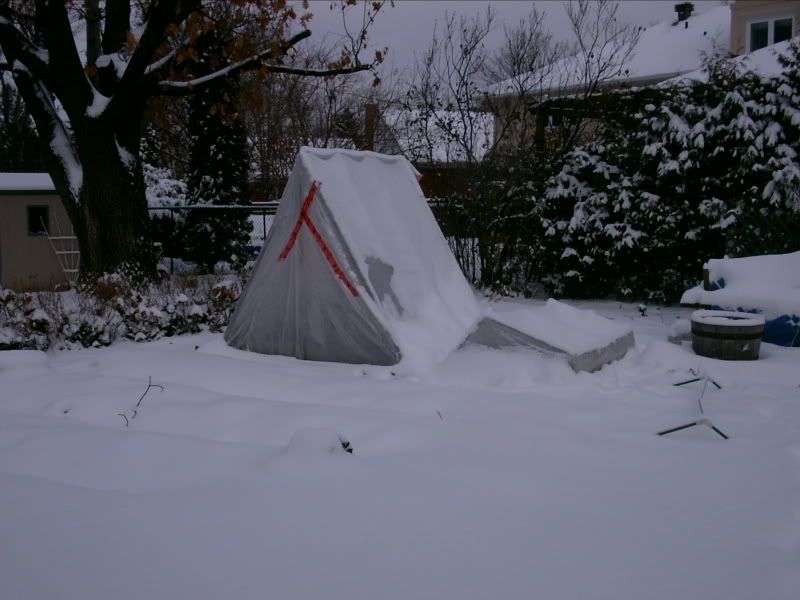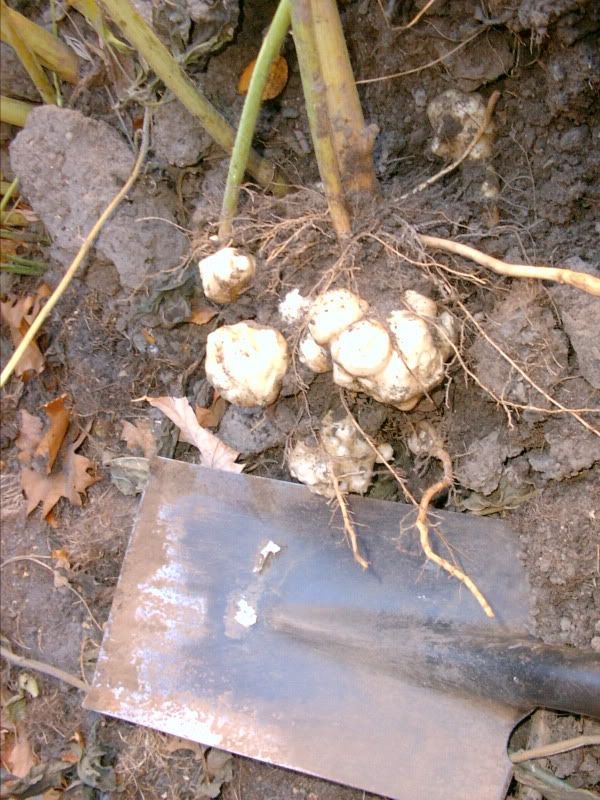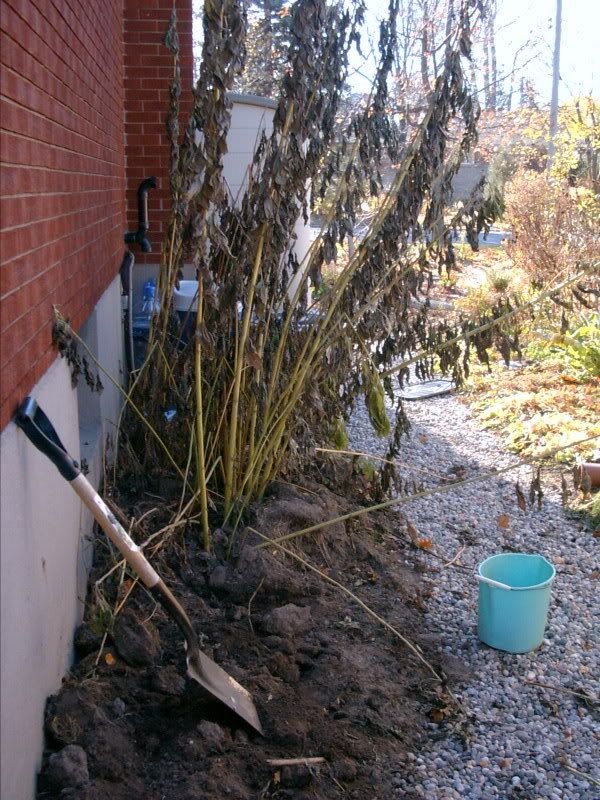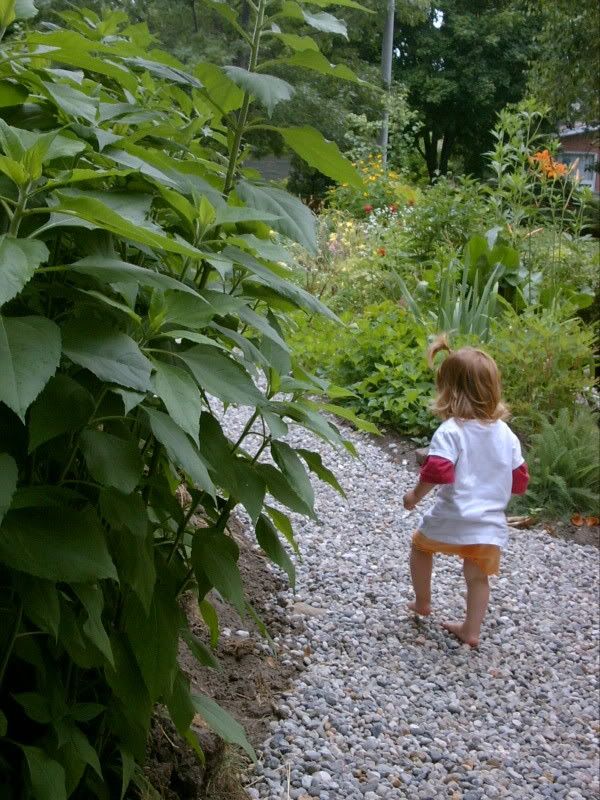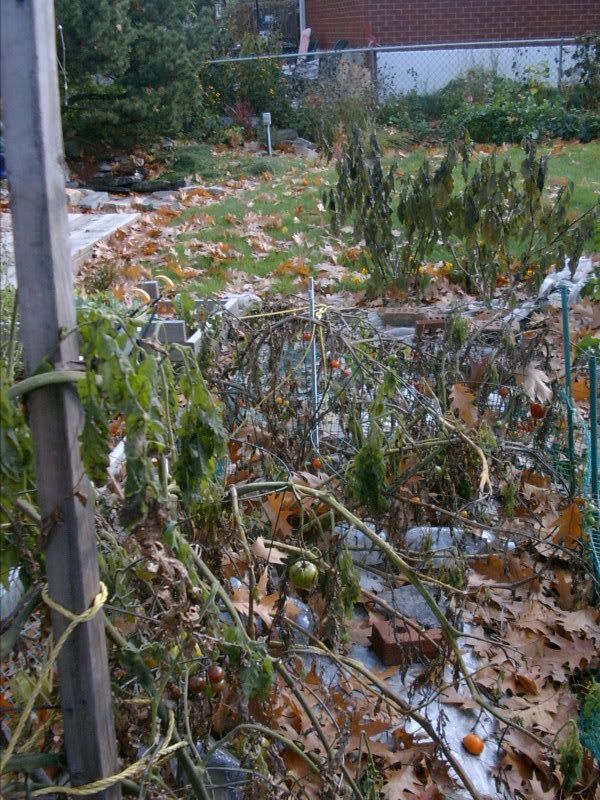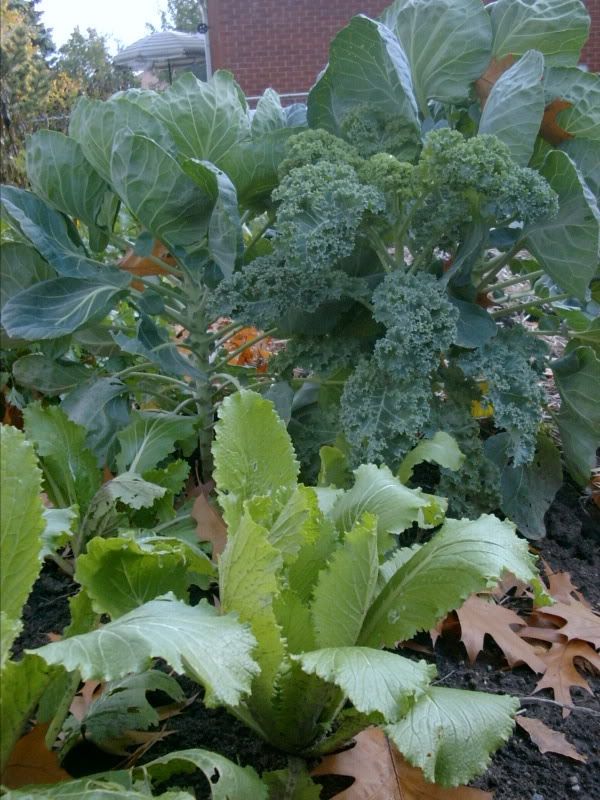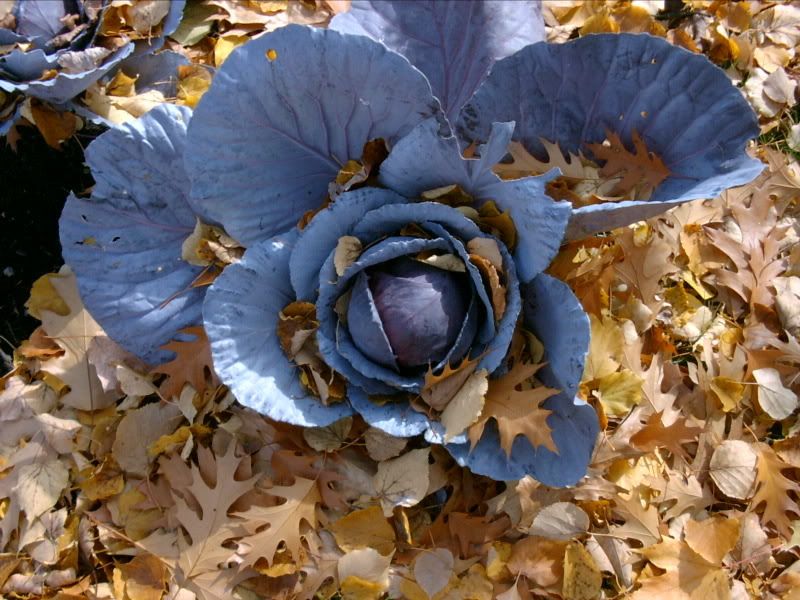Leaf MulchI decided this year that I would make leaf mulch. Normally, I put all my leaves in a pile to make leaf mould which is a great soil conditioner, and a nice mulch. However, it takes at least one year, if not more to make
leaf mould.
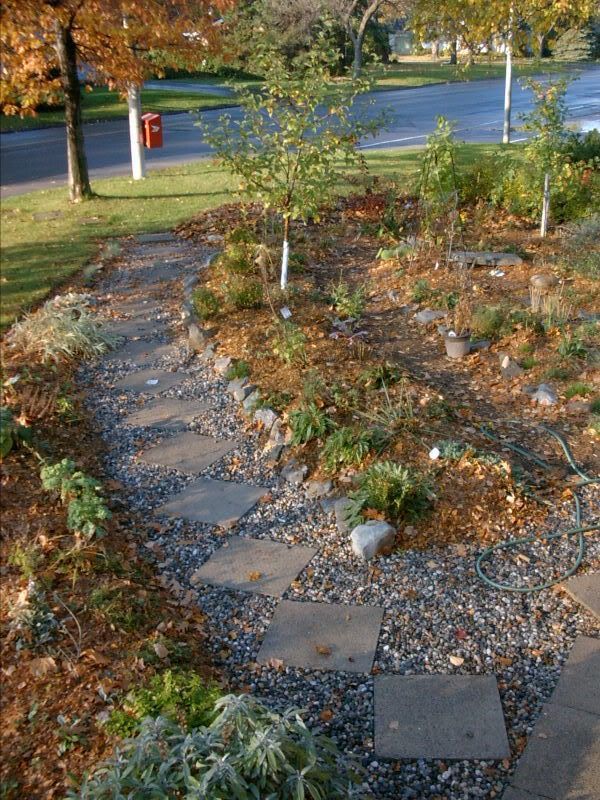 Front spiral garden
Front spiral garden
It is a very nice organic method, little energy use (mostly just yours as you rack them into the recepticle or pile), little waste. As most of us are plagued by the LAWN, we feel the need to remove most of the leaf litter to maintain the falsehood of a mowed meadow instead of a forest clearing. Psst - you can mulch leaves onto the lawn but I don't know to what quantity. I use this fact as an excuse for not removing every last leaf. Anyhoo -
There is another way of using your leaves as mulch - the impatient way.
Instructive InstructionsStep 1: Use lawn mower to bag up the last cutting of grass and leaves.
Step 2: Dump bagged or racked leaves onto your driveway
Step 3: Run over leaves with a lawnmower until they shredded into small pieces
Step 4: Apply a thin layer to perennial beds as mulch
Step 5: Use as insulation around tender plants
Step 6: Smile at the odd looks of neighbours.
A Conversation with NeighboursI didn't have enough leaves for all my gardens so I got some off my neighbours. They were bemused? confused?
Me: Hey there. Saw you raking like fiends yesterday.
Innocent Neighbour: We thought of tossing them over the bushes into the neighbour's yards but figured it would be better to bag them.
Me: Funny you should say that because I could use some leaves.
Innocent Neighbour: Really?
Me: Yeah, I'm making leaf mulch. (very important that you explain that aren't just leaving whole leaves on the beds to blow back into their yards). I am grinding them very small so they won't blow around as much.
Innocent Neighbour: Well we have a lot of leaves.
Me: Great.
Innocent Neighbour: I think there are 15 bags.
Me: I'm sure I could use it.
Innocent Neighbour: 15 bags.
Me: Super. When can I get them.
Innocent Neighbour: I'll open the garage
--Meanwhile, Innocent Neighbour's wife, whom we will call Unbelieving Neighbour came out. --
Unbelieving Neighbour: No, she doesn't.
Innocent Neighbour: I'm not kidding.
Me: No, really I want the leavs.
Unbelieving Neighbour: There are 15 bags!
Me: That should just be enough.
And now my beds are mulched.
LinksInfo on leaf mulchOak versus maple leaves and dandelion populations?Making partly decomposed leaf mulchMore on leaf mulch - whole or shreddedUrban Leaf uses
